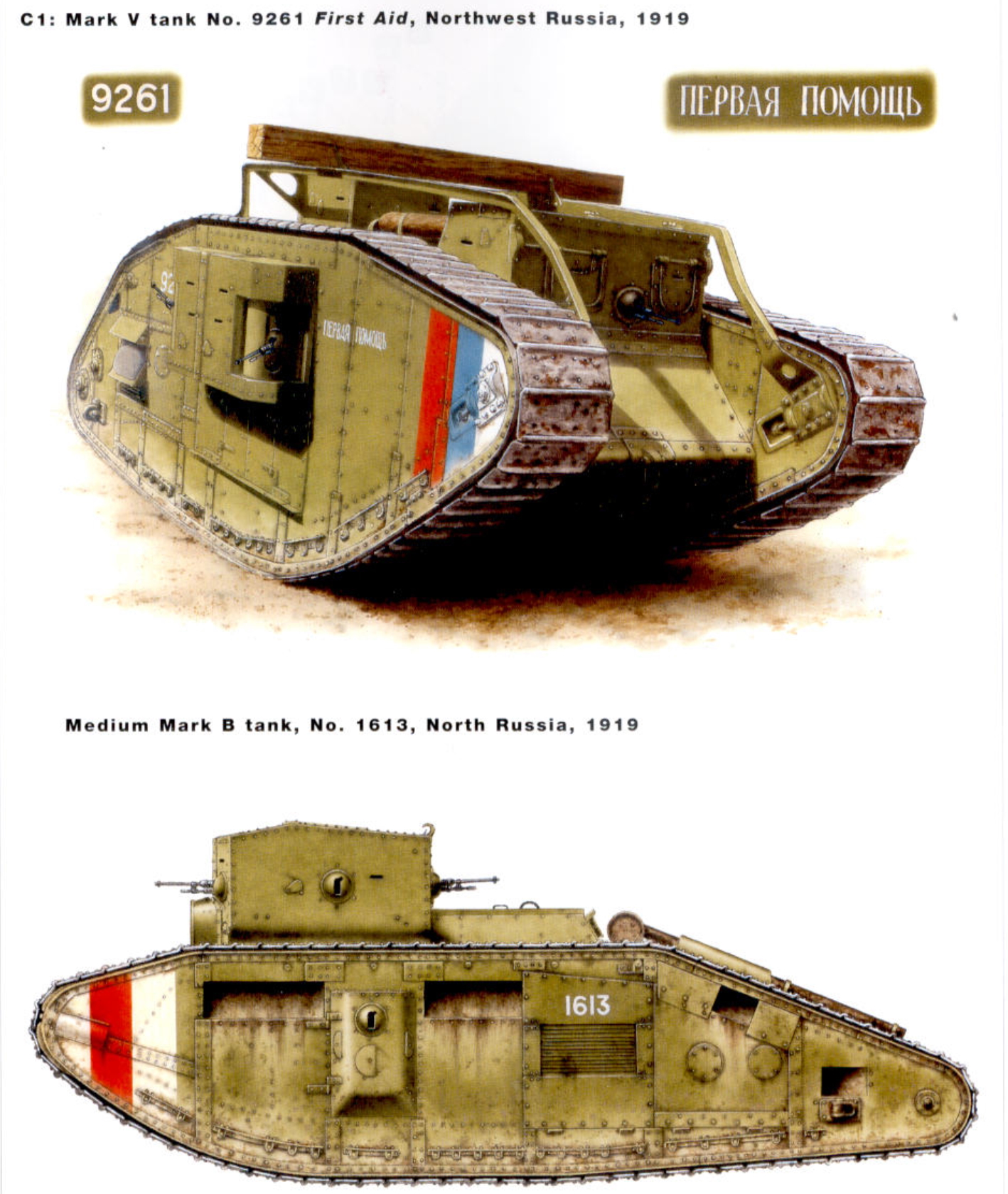
WHIPPET TANK Seen here from the rear, the Whippet was a fast, 13-kilometre per hour (eight-mile per hour) tank armed with four Hotchkiss machine guns in its fixed turret. 17 were sent to Russia. They were used to pursue broken troops and exploit breakthroughs by other tanks. Denikin insisted that only officers could crew the tanks that had been provided. The Russian officer here is a member of the crew, seen at the rear of a Whippet.
Between 1919-20 British tanks lumbered across the sun-baked steppes of southern Russia, flanked by Cossacks wielding lances and sabres.
In 1916 the Russians had been considering importing tanks from the west. However, in the confusion following the following the revolution of March 1917, this plan lapsed, although a down payment was made by the Provisional Government. However, during 1919 a number of tanks were supplied directly to Denikin’s forces in southern Russia by the British. A dozen French Renaults were also provided but fell into Bolshevik hands. The British supplied small numbers of tanks to other anti-Bolshevik groups. They also supplied other equipment in the hope of influencing the bitter civil war.
MARK V TANK
The bulk of the tanks supplied to Denikin’s forces from March 1919 were Mark V types: Male (two six-pounder guns, one on each side), Female (machine guns only, two on each side) and Hermaphrodites/Composites (a six-pounder gun on one side and two machine guns on the other). All types also had machine guns between the tracks to the front and rear. Some of the British tanks supplied were captured by the Bolsheviks, including 50 or so Mark Vs.
The first 12 tanks (six Mark Vs and six Medium As, known as `Whippets’) delivered were committed to action on 20 May 1919 northwest of Taganrog where they spearheaded an operation to clear an important railway line. They struck terror into enemies, who broke and ran. This reaction was to become common over the course of the next six months. In June a further 16 machines arrived. Two Mark Vs and two Whippets were dispatched to support the attack on the heavily fortified city of Tsaritsyn (later Stalingrad). The tanks, some with British crews, broke down barbed wire defences and on 30 June entered the city in triumph.
Battle of Tsaritsyn
The battle started when White forces under Ataman Pyotr Krasnov laid siege to Tsaritsyn in the autumn of 1918, pushing back the Red Army defenders into areas surrounding the town on the west bank. The local Bolshevik leaders desperately called Moscow for reinforcements and arms, but received nothing other than orders to stand firm.
The city was saved by the actions of the local chairman of the military committee, Joseph Stalin. Stalin urged his comrades to continue fighting and disobeyed direct orders from Moscow by recalling forces from the Caucasus, nicknamed Zhloba’s ‘Steel Division’. These forces were able to attack the White forces in the rear and defeat them, saving Tsaritsyn for the Bolsheviks. Three major engagements then developed around the city afterwards during the entire duration of the battle but were likewise less successful than the first one.
White general Anton Denikin’s troops temporarily took over the city in June 1919. Major Ewen Cameron Bruce of the British Army had volunteered to command a British tank mission assisting the White Army. He was awarded the Distinguished Service Order for his bravery during the June 1919 battle for single-handedly storming and capturing the fortified city of Tsaritsyn, under heavy shell fire in a single tank; this led to the successful capture of over 40,000 prisoners. The fall of Tsaritsyn is viewed “as one of the key battles of the Russian Civil War”, which greatly helped the White Russian cause. Noted historian B. H. Liddell Hart commented that Bruce’s action is “one of the most remarkable feats in the whole history of the Tank Corps.”
However, Red Army forces under both Stalin and Voroshilov, strengthened by supplies and weapons that had recently arrived from Moscow, staged an all-out assault towards the city and retook it by January 1920. As a result, the defeated White Army, now in danger of destruction, then retreated towards the Crimean Peninsula.
Denikin organised the 73 tanks he’d received by October 1919 into the First and Second Tank divisions. Repair and training facilities, supervised by members of the Royal Tank Corps, were located at Taganrog until late 1919, when the base was overrun by the Red Army.